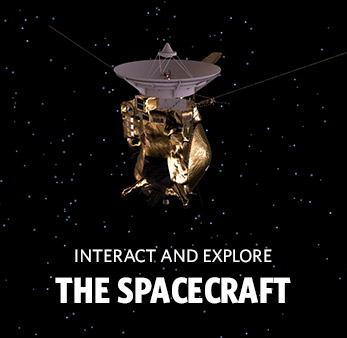PI: Professor Michele K. Dougherty
MAG General Description:
The primary objective of the Dual Technique Magnetometer (MAG) is to determine the planetary magnetic fields and the dynamic interactions in the planetary environment.
MAG Scientific Objectives:
- To determine the internal magnetic field of Saturn.
- To develope a three-dimensional model of Saturn' magnetosphere.
- To determine the magnetic state of Titan and its atmosphere.
- To derive an empirical model of the Titan electromagnetic environment.
- To investigate the interactions of Titan with the magnetosphere, magnetosheath, and solar wind.
- To survey the ring and dust interactions with the electromagnetic environment.
- To study the interactions of the icy satellites with the magnetosphere of Saturn.
- To investigate the structure of the magnetotail and the dynamic processes therein.
MAG Sensing Instruments:
- Vector/Scalar Helium Magnetometer
- Fluxgate Magnetometer
MAG Instrument Characteristics:
- Mass (current best estimate) = 3.00 kg
- Average Operating Power (current best estimate) = 3.10 W
- Average Data Rate (current best estimate) = 3.60 kilobits/s
Magnetometers are direct-sensing instruments that detect and measure the strength of magnetic fields in the vicinity of the spacecraft. The Cassini Dual-Technique Magnetometer (MAG) measures magnetic fields during the Titan and Saturn encounters. The MAG consists of a vector/scalar helium magnetometer sensor, a fluxgate magnetometer sensor, a data processing unit, three power supplies, plus operating software and electronics associated with the sensors.
The vector/scalar helium magnetometer (V/SHM) sensor is used to make both vector (magnitude and direction) and scalar (magnitude only) measurements of magnetic fields. The V/SHM and its electronics are being supplied by JPL. The fluxgate magnetometer (FGM) sensor is used to make vector field measurements. This sensor and its electronics are being provided by the Imperial College of London.
The instrument data processing unit (DPU) is the responsibility of the Technical University of Braunschweig. The DPU interfaces with the spacecraft Command and Data Subsystem through the JPL-designed bus interface unit (BIU). All commands, data, and processor program changes are received or transmitted through the BIU. The MAG components are powered by three power supplies plus the 30-volt spacecraft bus. Power supply 0 powers the BIU and the DPU. Power supplies 1 and 2 are redundant and power the V/SHM electronics. The FGM electronics are powered by the spacecraft bus.
Since magnetometers are sensitive to electric currents and ferrous components on the spacecraft, they are generally placed on an extended boom, as far from the spacecraft as possible. In this case, the FGM sensor is located midway out on the Cassini magnetometer boom, and the V/SHM sensor is located at the end of the boom. The boom itself, composed of thin, nonmetallic rods, will be collapsed very compactly during launch and deployed only after the spacecraft has separated from the launch vehicle.
Cassini Orbiter Instruments
They surveyed and sniffed, analyzed and scrutinized. They took stunning images in various visible spectra. Cassini's 12 science instruments were designed to carry out sophisticated scientific studies of Saturn, from collecting data in multiple regions of the electromagnetic spectrum, to studying dust particles, to characterizing Saturn's plasma environment and magnetosphere.
Optical Remote Sensing
Mounted on the remote sensing pallet, these instruments studied Saturn and its rings and moons in the electromagnetic spectrum.
- Composite Infrared Spectrometer (CIRS)
- Imaging Science Subsystem (ISS)
- Ultraviolet Imaging Spectrograph (UVIS)
- Visible and Infrared Mapping Spectrometer (VIMS)
Fields, Particles and Waves
These instruments studied the dust, plasma and magnetic fields around Saturn. While most didn't produce actual "pictures," the information they collected is critical to scientists' understanding of this rich environment.
- Cassini Plasma Spectrometer (CAPS)
- Cosmic Dust Analyzer (CDA)
- Ion and Neutral Mass Spectrometer (INMS)
- Magnetometer (MAG)
- Magnetospheric Imaging Instrument (MIMI)
- Radio and Plasma Wave Science (RPWS)
Microwave Remote Sensing
Using radio waves, these instruments mapped atmospheres, determined the mass of moons, collected data on ring particle size, and unveiled the surface of Titan.
































